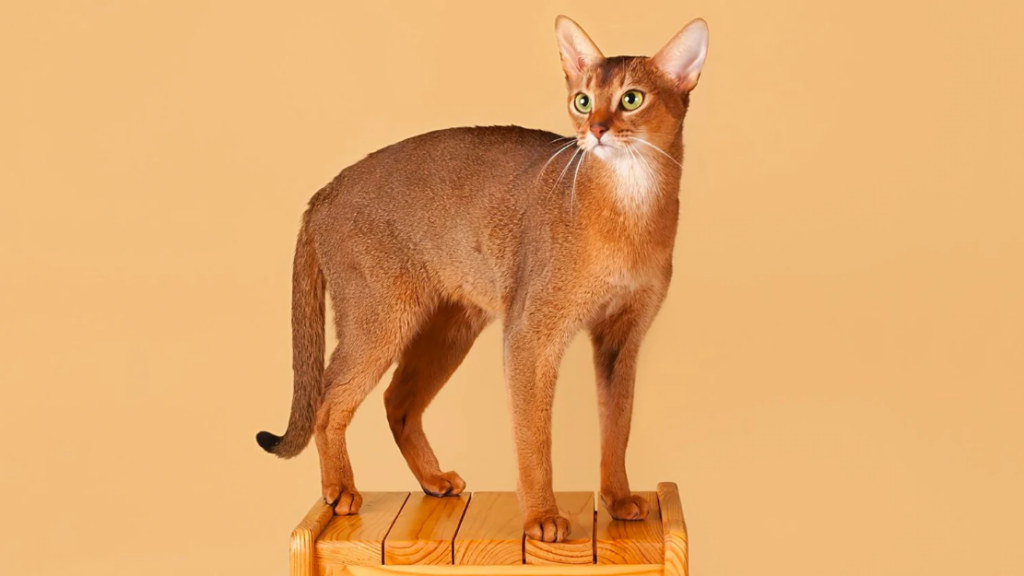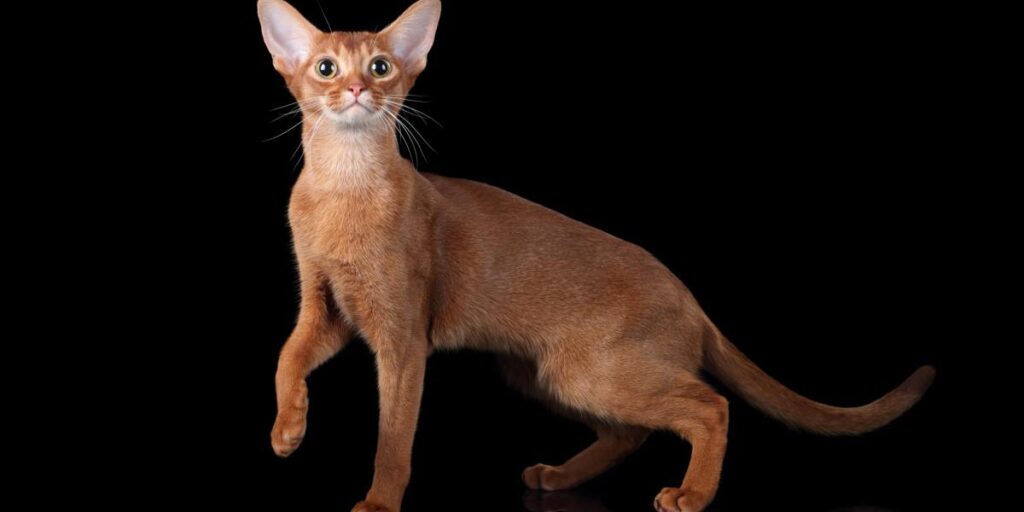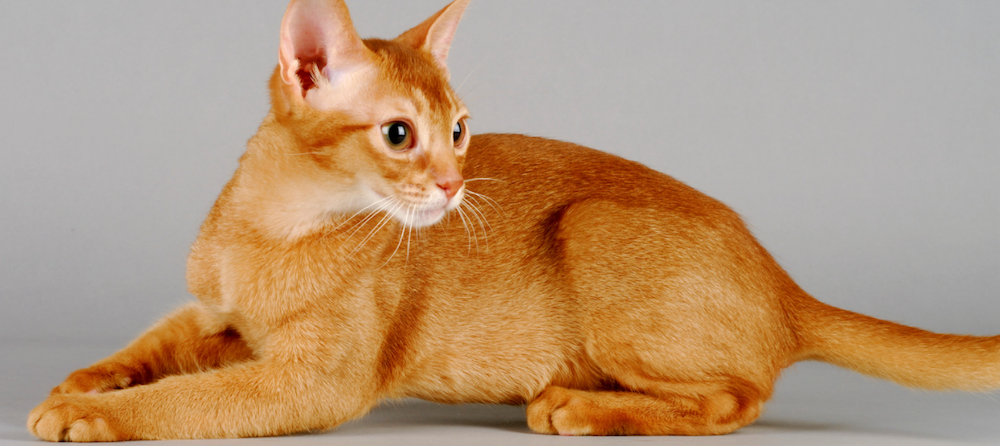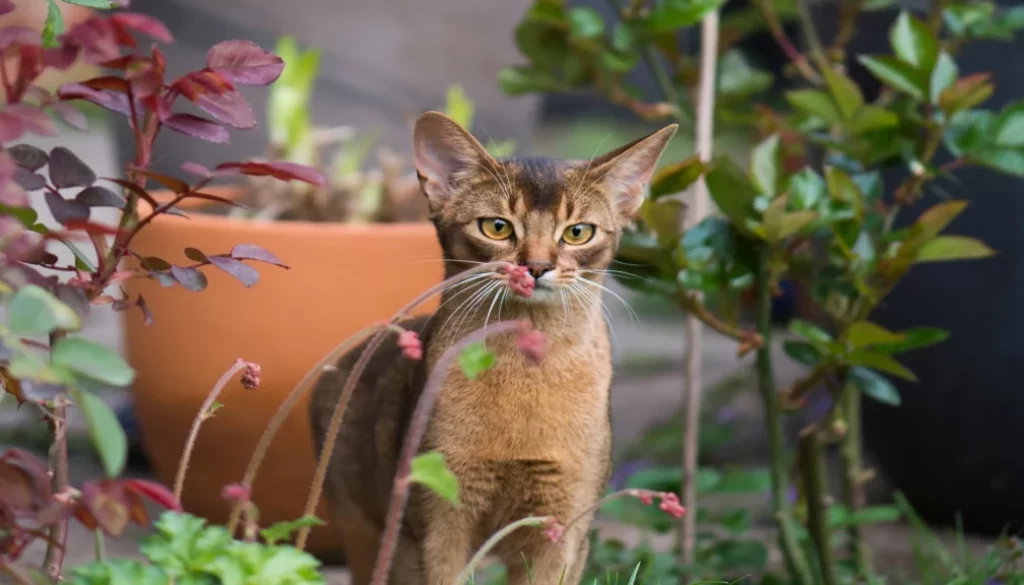Exploring the Abyssinian Cat Breed: Origins and History
The Abyssinian cat breed is a unique and fascinating feline with a rich history and distinctive characteristics. This breed has captured the hearts of cat lovers around the world with its elegant appearance and playful personality. In this article, we will delve into the origins and history of the Abyssinian cat, exploring its ancient roots, modern popularity, and influence in popular culture.
Origins of the Abyssinian Cat Breed
The exact origins of the Abyssinian cat breed are shrouded in mystery, with various theories and legends surrounding its development. Some believe that the breed originated in ancient Egypt, where cats were revered and worshipped as sacred creatures. Others suggest that Abyssinians were brought to Europe by British soldiers returning from military campaigns in Abyssinia (modern-day Ethiopia) in the 19th century.
Regardless of its exact origins, the Abyssinian cat has become a beloved breed with a distinctive appearance and personality. Its sleek, ticked coat in warm shades of brown and gold gives it a wild and exotic look, while its expressive almond-shaped eyes convey intelligence and curiosity.
Characteristics of the Abyssinian Cat
The Abyssinian cat is known for its lively and affectionate nature, making it a popular choice for pet owners seeking a playful and interactive companion. These cats are highly intelligent and thrive on mental stimulation, enjoying games and puzzles that challenge their agile minds.
In terms of physical appearance, Abyssinians are medium-sized cats with a muscular build and elegant posture. Their coats are short and dense, with a distinctive ticked pattern that gives them a shimmering, agouti coat. This unique coat pattern sets them apart from other breeds and adds to their exotic allure.

Abyssinian Cat Breed in Popular Culture
The Abyssinian cat breed has made a mark in popular culture, with several famous cats capturing the spotlight in literature, film, and social media. From the literary adventures of Jenny Linsky’s Abyssinian friend in “The High Hills” to the charming feline characters in Disney’s “The Aristocats,” Abyssinians have been portrayed as intelligent, adventurous, and spirited companions.
In recent years, Abyssinians have also gained popularity on social media platforms, with Instagram-famous cats like Nala and Smoothie capturing the hearts of millions of followers. These charismatic felines showcase the playful and affectionate nature of the breed, attracting a new generation of admirers.
Abyssinian Cat as a Pet
As pets, Abyssinians are known for their active and engaging personalities, requiring plenty of mental and physical stimulation to thrive. Owners of Abyssinians should provide interactive toys, cat trees, and puzzle feeders to keep their feline friends entertained and engaged.
When it comes to grooming, Abyssinians have low maintenance coats that require minimal brushing and occasional bathing. However, regular veterinary check-ups and dental care are essential to ensure their health and well-being.
Abyssinian Cat Breed Standards
Breed standards for Abyssinians vary among cat registries and associations, but generally emphasize the breed’s distinctive coat pattern, body type, and temperament. Show-quality Abyssinians must have a well-defined ticked coat in one of the recognized colors, such as ruddy, blue, cinnamon, or fawn.
Show requirements for Abyssinians also include specific criteria for eye color, ear shape, and body proportions, ensuring that the breed maintains its unique characteristics and standards of excellence.
Abyssinian Cat Breed in Art and Literature
The elegance and beauty of the Abyssinian cat breed have inspired artists and writers for centuries, with numerous depictions in art, literature, and folklore. From Egyptian tomb paintings to modern-day cat memes, Abyssinians have captured the imagination of people worldwide with their striking appearance and playful demeanor.
In literature, Abyssinians have been featured in classic works like “The Cat Who…” series by Lilian Jackson Braun and “Serafina’s Diary” by Rudyard Kipling, showcasing their intelligence and charm. Artists like Henriette Ronner-Knip and Henriëtte Ronner-Knip have also immortalized Abyssinians in their paintings, capturing the breed’s grace and beauty on canvas.

Abyssinian Cat Breed in Modern Times
In modern times, the Abyssinian cat breed continues to captivate cat lovers with its unique blend of elegance, intelligence, and playfulness. With its social media presence growing by the day, Abyssinians are becoming internet sensations, showcasing their quirky antics and affectionate nature to a global audience.
Popularity and trends in Abyssinians vary across different regions and countries, with some areas experiencing a surge in demand for the breed while others maintain a more traditional appreciation for its classic features. Breeders and enthusiasts alike continue to celebrate the Abyssinian cat’s enduring charm and appeal, ensuring its place as a beloved feline companion for generations to come.
Breeding and Genetics of the Abyssinian Cat
Breeding practices and genetics play a crucial role in maintaining the purity and health of the Abyssinian cat breed. Responsible breeders carefully select breeding pairs based on genetic testing and health screenings to prevent hereditary diseases and promote strong, healthy offspring.
The genetics of the Abyssinian breed are complex, with variations in coat color, pattern, and eye color determining the characteristics of individual cats. Breeders must understand these genetic factors and breed standards to produce quality Abyssinian kittens that meet the breed’s standards of excellence.
Abyssinian Cat Breed Variations
The Abyssinian cat breed is known for its striking coat colors and patterns, which add to the breed’s exotic appeal. From the classic ruddy Abyssinian to the rare blue and cinnamon variations, each color has its unique charm and characteristics. In addition to coat colors, Abyssinians may also exhibit distinct patterns and markings that set them apart from other cats. Let’s explore the different coat variations and unique traits found in Abyssinian cat breed variations:
1. Ruddy Abyssinian
- The ruddy Abyssinian is the most common and classic coat color in the breed.
- Its coat is a warm, reddish-brown color with black ticking, giving it a rich and vibrant appearance.
- Ruddy Abyssinians typically have striking green or gold eyes that complement their coat color.
2. Blue Abyssinian
- The blue Abyssinian is a rare color variation characterized by a slate-blue coat with silver ticking.
- Blue Abyssinians have a cool-toned appearance that sets them apart from their warmer counterparts.
- Blue Abyssinians may have blue or green eyes that enhance their unique coloring.
3. Cinnamon Abyssinian
- The cinnamon Abyssinian is a warm-toned variation with a reddish-brown coat and chocolate ticking.
- Cinnamon Abyssinians have a rich and luxurious appearance that exudes elegance and charm.
- Cinnamon Abyssinians may have amber or green eyes that complement their coat color.
4. Fawn Abyssinian
- The fawn Abyssinian is a pale variation with a cream-colored coat and lilac ticking.
- Fawn Abyssinians have a delicate and ethereal appearance that sets them apart from bolder colors.
- Fawn Abyssinians may have green or amber eyes that enhance their soft coloring.
5. Silver Abyssinian
- The silver Abyssinian is a shimmering variation with a silver-white coat and black ticking.
- Silver Abyssinians have a striking and ethereal appearance that glows in the light.
- Silver Abyssinians may have green, gold, or copper eyes that complement their silvery coat.
6. Red Abyssinian
- The red Abyssinian is a vibrant variation with a fiery-red coat and black ticking.
- Red Abyssinians have a bold and striking appearance that commands attention.
- Red Abyssinians may have green or gold eyes that enhance their fiery coloring.
In addition to coat colors, Abyssinians may also exhibit unique traits and characteristics based on their genetic heritage and breeding history. Some coat variations may be more predisposed to certain traits, such as eye color, temperament, and markings, adding to the diversity and individuality of the breed. Whether you prefer the classic ruddy Abyssinian or the rare silver variation, each coat color and pattern in the Abyssinian cat breed showcases the beauty and elegance of this beloved feline companion.
Abyssinian Cat Breed in Different Countries
Abyssinians can be found in homes and catteries around the world, with enthusiasts in different countries celebrating the breed’s beauty and charm. From the United States to Japan, Abyssinians have a global presence, captivating cat lovers with their exotic appearance and lively personality.
In some countries, Abyssinians are cherished for their beauty and elegance, while in others, they are prized for their intelligence and agility. Regardless of their location, Abyssinians are cherished as loving and loyal companions, bringing joy and laughter to their owners’ lives.

Famous Abyssinian Cat Owners
Several celebrities and public figures have owned Abyssinian cats, showcasing the breed’s popularity and appeal among people from all walks of life. From famous actors and musicians to royalty and politicians, Abyssinians have charmed their way into the hearts of some of the world’s most prominent figures.
Celebrities like Taylor Swift, Nicole Richie, and Heidi Klum have all been proud owners of Abyssinians, sharing photos and stories of their beloved feline friends on social media and in interviews. These famous Abyssinian owners help promote the breed’s unique qualities and foster appreciation for its elegance and intelligence.
Challenges Facing the Abyssinian Breed
Like all cat breeds, Abyssinians may face certain health issues and challenges that require careful management and attention from owners and breeders. Some Abyssinians may be prone to dental problems, kidney disease, or heart conditions, necessitating regular monitoring and veterinary care to ensure their well-being.
Preservation efforts are also critical to maintaining the genetic diversity and health of the Abyssinian breed. Responsible breeding practices, genetic testing, and health screenings are essential to avoid inbreeding and hereditary diseases, safeguarding the future of the breed for future generations.
Conclusion
In conclusion, the Abyssinian cat breed is a unique and captivating feline with a rich history, distinctive characteristics, and enduring popularity. From its ancient origins in Egypt to its modern acclaim in popular culture, the Abyssinian cat continues to charm and delight cat lovers around the world with its elegance, intelligence, and playfulness.
As a pet, the Abyssinian cat is a loyal and affectionate companion, bringing joy and laughter to its owners’ lives with its engaging personality and striking appearance. Whether as a show cat, a social media star, or a beloved family pet, the Abyssinian breed exemplifies the beauty and grace of the feline world, captivating hearts and minds with its enduring charm.
Also Read:
Pet Care Tips for Cats for Beginners
Pet Care Tips for Dogs for Beginners
